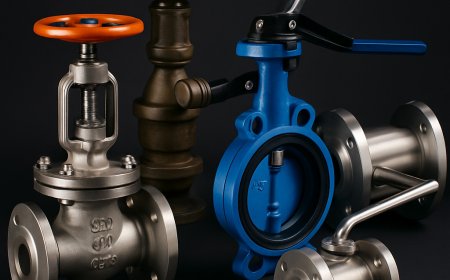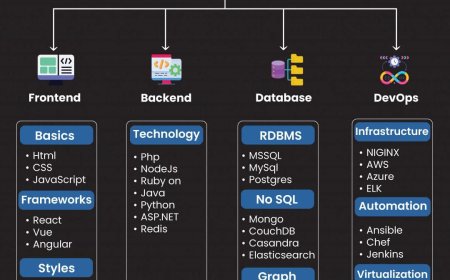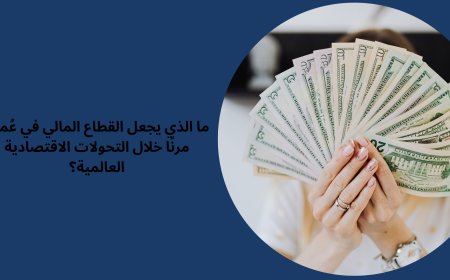Women in Fire Engineering and Industrial Safety: Breaking Stereotypes
The presence of women in Fire Engineering and Industrial Safety is not just a matter of equality, it is a testament to the evolving nature

Introduction
Fire Engineering and Industrial Safety have long been perceived as male-dominated domains, often associated with physical rigor, risk management, and technical prowess. However, as the world shifts towards greater gender inclusivity and workplace diversity, more women are challenging these stereotypes and forging successful careers in this critical field. The presence of women in Fire Engineering and Industrial Safety is not just a matter of equality, it is a testament to the evolving nature of safety leadership, innovation, and resilience.
This article delves into the growing role of women in Fire Engineering and Industrial Safety, the challenges they face, their remarkable contributions, and how they are transforming the sector by breaking long-held stereotypes.
The Traditional Image: A Male-Dominated Industry
Historically, Fire Engineering and Industrial Safety roles were considered physically demanding and technically intensive, often requiring on-site inspections, emergency response, and working in high-risk industrial environments. These perceptions discouraged many women from pursuing careers in this field. Societal expectations and gender biases further compounded the problem, reinforcing the notion that safety and fire engineering were mens jobs.
This image, however, is quickly changing. With advances in safety technology, greater awareness of gender diversity, and an evolving workplace culture, women are stepping confidently into roles that once seemed out of reach.
Women in Safety: A Rising Force
Across industries, from oil and gas to construction, manufacturing to chemical plants, women are increasingly taking on key roles in safety management, fire prevention, emergency planning, and compliance auditing. Armed with qualifications such as the Advanced Diploma in Industrial Safety, Fire and Safety Engineering degrees, and certifications from recognized institutions, women are proving their mettle.
Some of the positions women now hold include:
-
Fire Safety Officers
-
Industrial Safety Managers
-
Safety Auditors
-
Disaster Management Experts
-
Environmental Health & Safety (EHS) Consultants
In many cases, women bring unique strengths to the profession, strong attention to detail, effective communication, empathy in team management, and a holistic approach to problem-solving. These attributes are invaluable in creating a proactive safety culture in any organization.
Challenges Women Still Face
Despite progress, women in fire engineering and industrial safety often encounter significant challenges:
-
Gender Bias and Stereotyping
Many women still face skepticism about their physical abilities or technical competence, especially during field assignments or emergency simulations.
-
Lack of Representation
The visible absence of women role models in leadership positions makes it difficult for young women to envision long-term careers in the field.
-
Workplace Safety Concerns
Ironically, women entering safety roles sometimes face inadequate personal safety provisions, such as lack of suitable PPE (Personal Protective Equipment) designed for female body types.
-
Work-Life Balance
The demands of shift work, emergency responses, and remote site postings can strain work-life balance, particularly for women with caregiving responsibilities.
-
Limited Networking Opportunities
In male-dominated industries, women may struggle to access the informal networks that often support professional growth.
Despite these barriers, many women persevere, drawing strength from their passion for safety and a desire to protect lives and assets.
Success Stories: Inspiring Women in Fire and Safety
India and other countries are witnessing an inspiring rise in women safety professionals who are leading the change. Examples include:
-
Anu Devi, who became one of the first female fire officers in a large manufacturing unit in Gujarat, India. Her leadership during a chemical plant emergency won her national recognition.
-
Preeti Sharma, a safety auditor working across Asia, known for training over 5,000 workers in industrial safety and fire prevention.
-
Lt. Bhawana, who joined the fire service in a metropolitan city and now leads a team that responds to urban fire emergencies with exceptional efficiency.
Such women are not just succeeding; they are becoming role models, motivating more girls to consider careers in safety and engineering.
Education and Skill Development: A Game-Changer
One of the most effective ways to break stereotypes is through education. Programs like the Advanced Diploma in Industrial Safety, Post Graduate Diploma in Fire Safety, and specialized training in disaster management are equipping women with the technical knowledge and practical skills needed to excel.
Institutes across India, including AIFSE (All India Fire & Safety Education) and NIFS, are actively encouraging women to enroll and pursue certifications. Scholarships, mentorship programs, and women-specific career counseling are also being introduced to support this trend.
Key skills that women acquire in these programs include:
-
Fire Risk Assessment and Management
-
Safety Legislation and Compliance
-
Emergency Preparedness and Response
-
Hazard Identification and Control
-
Incident Investigation
-
Safety Audit and Inspection Techniques
With such a solid foundation, women are not only prepared to enter the workforce but also to lead and innovate within it.
Creating an Inclusive Safety Culture
To ensure that women continue to thrive in fire engineering and industrial safety, organizations must adopt inclusive policies and practices. This includes:
-
Designing gender-neutral recruitment and promotion systems.
-
Providing adequate PPE and facilities suited to women.
-
Encouraging mentorship and leadership programs for women.
-
Offering flexible working arrangements to support diverse needs.
-
Conducting regular gender-sensitivity training for all employees.
A workplace that supports and values diversity leads to better decision-making, stronger team performance, and improved safety outcomes.
Breaking the Stereotype: One Woman at a Time
Every woman who enters and thrives in the field of Fire Engineering and Industrial Safety chips away at outdated stereotypes. Their contributions help reshape the narrative, proving that safety is not about gender, its about commitment, competence, and character.
Encouraging girls from a young age to take an interest in science, technology, engineering, and math (STEM) subjects, showcasing women leaders in safety, and supporting inclusive workplace environments are all crucial steps toward lasting change.
Explore courses now at AIFSE - All India Fire & Safety Engineering to find the right fit for your future in Fire Engineering and Industrial Safety!
Conclusion
The journey of women in Fire Engineering and Industrial Safety is a powerful story of resilience, ambition, and transformation. As more women step into these roles, they not only bring a fresh perspective to workplace safety but also inspire a new generation to believe that no field is off-limits because of gender.
Breaking stereotypes is never easy, but with continued support from educational institutions, industries, and society at large, women will continue to redefine what it means to be a safety professional in the modern world.


























